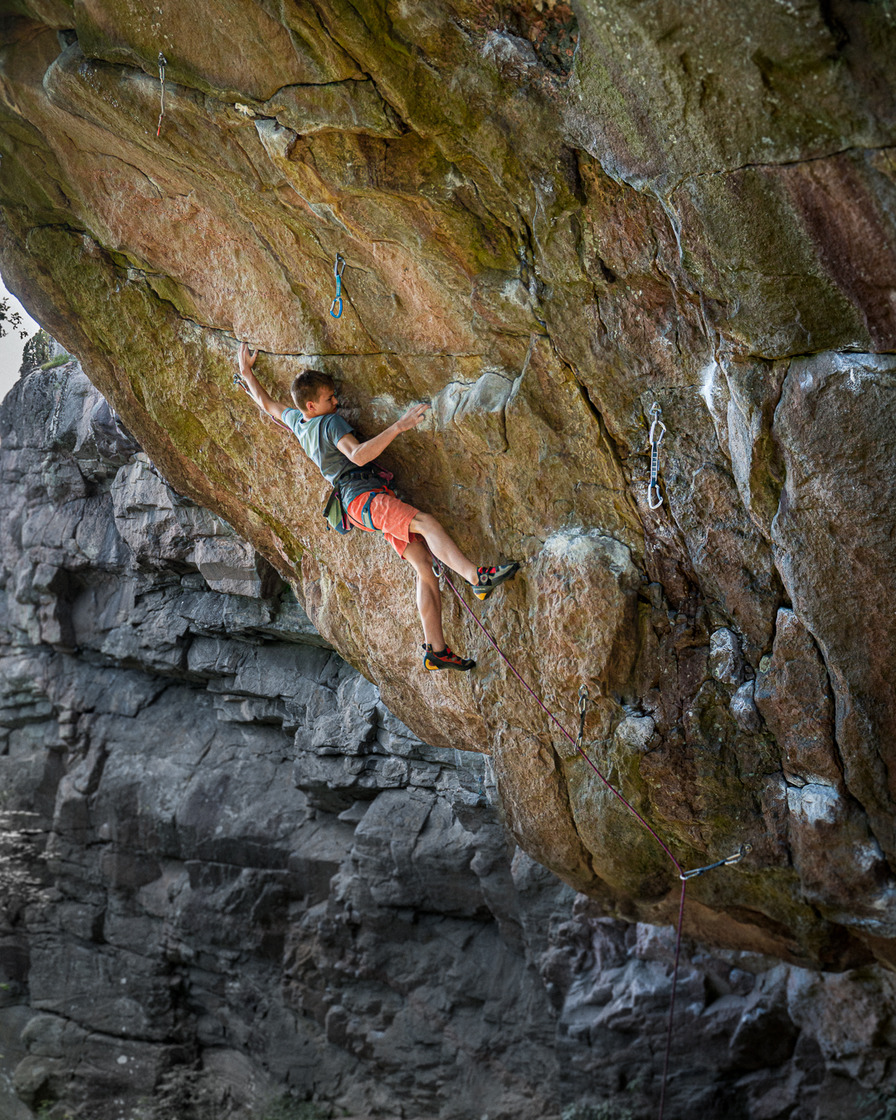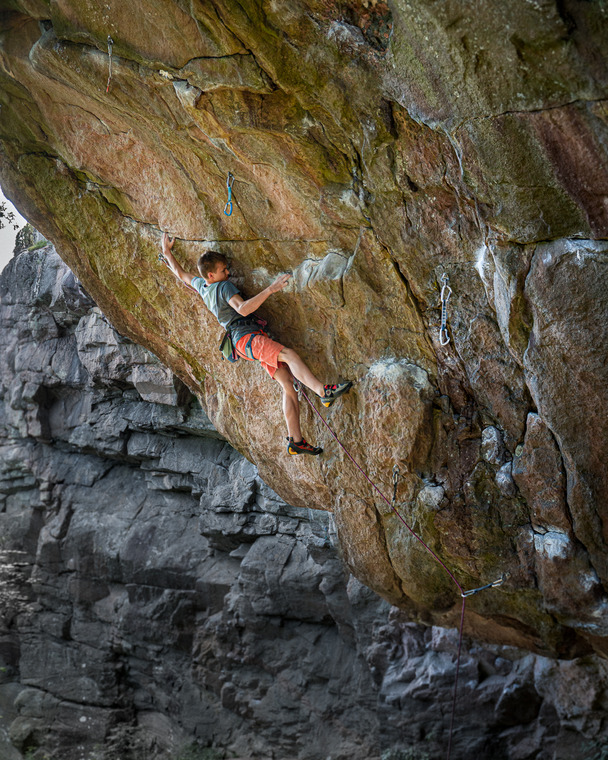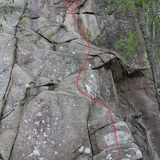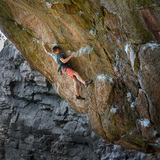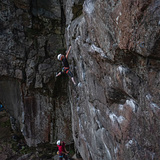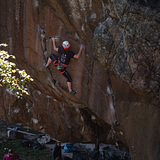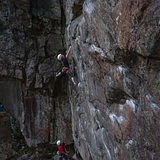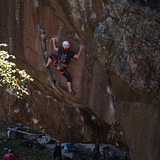The cave of Granitgrottan is probably the biggest climbable cave in Sweden with some of the country’s hardest routes. There are also some easier lines at the sectors around the main cave.
ASPECT AND CLIMATE
The different sectors in Granitgrottan face south, southeast or southwest and are pretty open. Some routes dry very fast while some are almost always wet (but are often climbable anyway).
There are a lot of ticks in the area.
THE ROUTES
The routes in the main cave start with 3-4 m vertical climbing, continue with 10 m pure roof climbing and finish with an about 15 m slightly overhanging wall. Around the main cave there are some more vertical walls with a bit easier routes.
The routes are between 10 and 35 m. Most of the routes at the crag are bolted and all routes are equipped with lower-offs.
THE SECTORS
BARNVÄGGEN
A very child friendly sector with grass in font at the crag and rather easy routes. There are both bolted and naturally protected routes as well as some routes which are climbed on top rope. All routes are equipped with lower-offs. The routes are between 10 and 15 m long and vertical or a bit slabby.
The crag is facing southeast and gets sun most of the day. Some shade is given by the big trees in front of the crag.
ROSA HYLLAN
This sector is just to the left of the main cave. Some routes start from the ground and some start from a ledge som e15 m up.
The crag is facing southeast and gets sun most of the day. The routes starting from the ground are shaded by tress to some extent while the ones starting from the edge are in the sun all day. The shaded routes dry slower than the ones in the sun.
The routes vary between steep slabs and slight overhangs. They are 10-15 m long. All routes, except one naturally protected and one which is climbed on top rope, are bolted. All routes have lower-offs.
To get to the ledge you can either climb one of the lower routes or you can go around the whole crag to the right and lower down.
GRANITGROTTAN
This is the main attraction of the area. The cave is one of the most important sport climbing sectors in Sweden with high concentration of hard and very steep routes.
All but three routes are bolted, and all routes are equipped with lower-offs. The routes are between 10 and 35 m long.
The cave faces south and southeast and is in the sun most of the day. Some of the routes suffer from seepage but they are normally climbable anyway.
VERTIKALA VÄGGEN
The vertical wall just to the right of the cave.
The routes here are about vertical and 12-15 m long. All routes but one are bolted, and all routes are equipped with lower-offs.
The sector is facing southwest with sun after noon. Most of the routes dry rather fast.
ALPINA VÄGGEN
A little sector some 50 m to the right of Vertikala väggen with 4 vertical and bolted routes (and one top rope). The routes around 12 m long and equipped with lower-offs.
The crag is facing southwest with afternoon sun. The routes dry rather quick.
